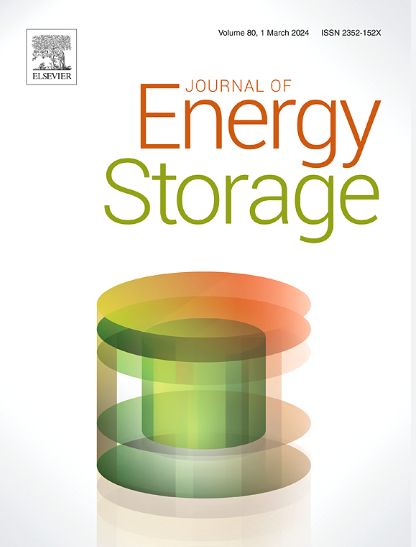电子元件的先进热调节:循环热冲击下基于pcm的散热器的超声场集成
IF 8.9
2区 工程技术
Q1 ENERGY & FUELS
引用次数: 0
摘要
在热冲击条件下对电子设备进行热管理是防止设备失效、降低效率和延长使用寿命的必要措施。在本研究中,利用超声场来管理一个含相变材料的散热器在循环热冲击下的热状态的有效性进行了数值研究。对该系统的性能进行了2000年以上的评价。在前1000秒,散热器底部施加30w /cm2的恒定热通量,在第二个1000秒,散热器底部施加5次热冲击,每次持续100秒。冲击热通量的四种不同值(60、90、120和150 W/cm2)和三种不同的换能器功率(15、30和60 W)被考虑。结果表明,当冲击热通量为60、90、120和150 W/cm2时,无超声场时CPU最高温度分别在1815、1615、1450和1405 s内达到90℃安全工作阈值。然而,当施加超声场时,系统的最高温度始终保持在90°C以下。本文章由计算机程序翻译,如有差异,请以英文原文为准。
Advanced thermal regulation of electronic components: Ultrasonic field integration in PCM-based heat sinks under cyclic thermal shock
Thermal management of electronic equipment in thermal shock conditions is necessary to prevent device failure and reduce efficiency and increase their useful life. In the present research, the effectiveness of using an ultrasonic field to manage the thermal conditions of a heat sink containing phase change material exposed to cyclic thermal shock is numerically investigated. The performance of the system is evaluated over 2000 s. In the first 1000 s, a constant heat flux of 30 W/cm2 is applied to the bottom of the heat sink, while in the second 1000 s, 5 thermal shocks are applied to the bottom of the heat sink, each lasting for 100 s. Four different values for the shock heat flux (60, 90, 120, and 150 W/cm2) and three different transducer powers (15, 30, and 60 W) are considered. The results indicated that for shock heat fluxes of 60, 90, 120, and 150 W/cm2, the maximum CPU temperature in the absence of an ultrasonic field reaches the 90 °C safe operating threshold within 1815, 1615, 1450, and 1405 s, respectively. However, when the ultrasonic field is applied, the maximum temperature of the system consistently remains below 90 °C.
求助全文
通过发布文献求助,成功后即可免费获取论文全文。
去求助
来源期刊

Journal of energy storage
Energy-Renewable Energy, Sustainability and the Environment
CiteScore
11.80
自引率
24.50%
发文量
2262
审稿时长
69 days
期刊介绍:
Journal of energy storage focusses on all aspects of energy storage, in particular systems integration, electric grid integration, modelling and analysis, novel energy storage technologies, sizing and management strategies, business models for operation of storage systems and energy storage developments worldwide.
 求助内容:
求助内容: 应助结果提醒方式:
应助结果提醒方式:


